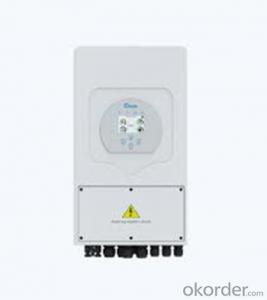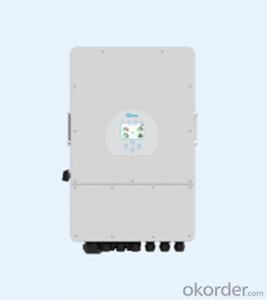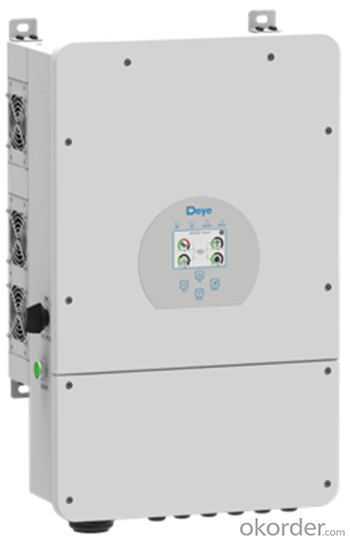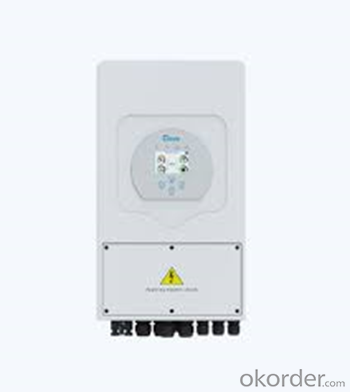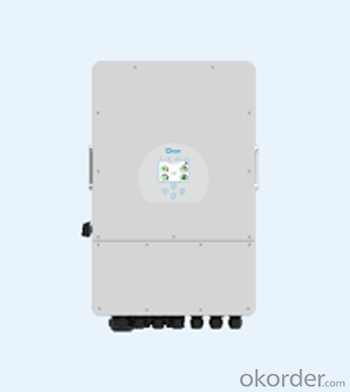Fox Solar Inverter - Deye Factory Price 48V 8KW Hybrid Solar Inverter with UL Certificates
- Loading Port:
- Stock in Panama
- Payment Terms:
- TT OR LC
- Min Order Qty:
- 10 pc
- Supply Capability:
- 5000 pc/month
OKorder Service Pledge
OKorder Financial Service
You Might Also Like
Specification
Specification
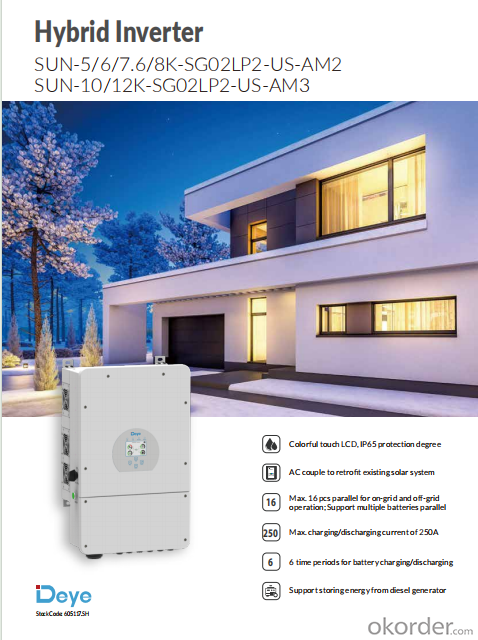
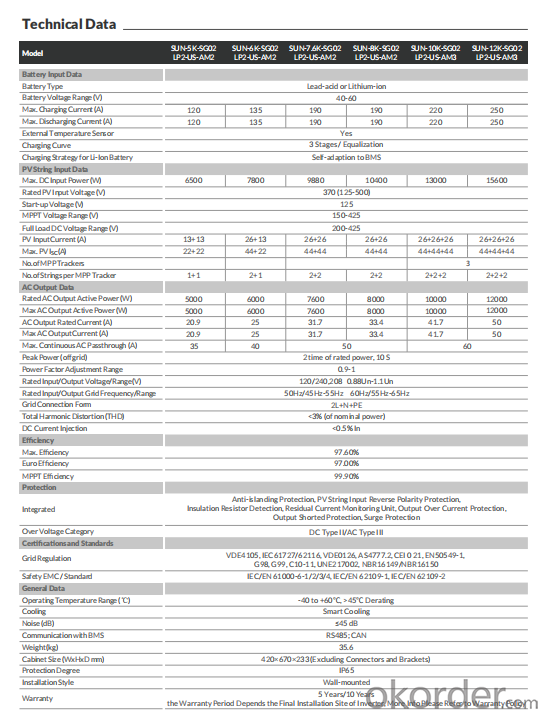
Company presentation
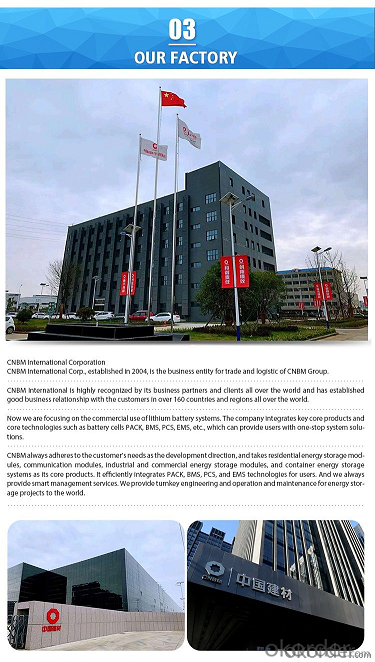

RFQ
Q: Do you have CE?A: Yes, our products are approved by CE.Q: Is OEM &ODM available in your factory ?A: Yes, you just offer us necessary documents and then we will produce the products as your requirements.Q: What is your Packing details?A: 1.Wooden case or carton package,standard export packages2.All of the productions are inspected carefully by QC before delivery.Q: What is your Delivery time?A: Usually, we make merchandise inventory. If we have the products in stock, the delivery time is 5-10 days after receiving the deposit; If we don’t have the products in stock, we will arrange the production right now. The delivery time will be 10-30 days. It depends on the quantity of order.Q:Why choose us?A: 1. Ready To Ship 2. Sample Available 3. One-Stop Service 4. Online customization5. Many years' experiences of manufacturing and service available in 24hours
- Q: How does a solar inverter handle overloading?
- A solar inverter handles overloading by monitoring the power output from the solar panels and the load demand from the connected appliances. When the load demand exceeds the maximum capacity of the inverter, it automatically adjusts the power output to avoid overloading. Additionally, advanced inverters may have overload protection mechanisms such as short circuit protection, thermal shut down, or automatic shutdown to prevent damage to the system.
- Q: How do you choose the right voltage rating for a solar inverter?
- When choosing the right voltage rating for a solar inverter, it is important to consider the voltage of the solar panels and the electrical grid. The voltage rating of the inverter should match or be compatible with both of these sources. Additionally, factors such as the maximum power output of the solar panels and the electrical load should also be taken into account to ensure optimal performance and efficiency of the inverter.
- Q: How does a solar inverter handle grid faults or disturbances?
- A solar inverter handles grid faults or disturbances by continuously monitoring the grid voltage and frequency. When a fault or disturbance is detected, the solar inverter quickly disconnects from the grid to ensure safety and protect the system. It then enters a standby mode until the grid returns to normal conditions. Once the grid stabilizes, the solar inverter reconnects and resumes its normal operation of converting solar energy into usable electricity.
- Q: How does a solar inverter handle voltage regulation during load changes?
- A solar inverter handles voltage regulation during load changes by continuously monitoring the voltage and adjusting its output accordingly. It uses advanced control algorithms to regulate the voltage and ensure a stable and consistent supply of power to the connected load, even during fluctuations in demand. This allows the inverter to efficiently adapt to changing load conditions and maintain the desired voltage levels.
- Q: What are the different power output modes of a solar inverter?
- The different power output modes of a solar inverter include grid-tie mode, off-grid mode, and hybrid mode. In grid-tie mode, the inverter synchronizes with the utility grid and feeds excess solar power back to the grid. Off-grid mode allows the inverter to operate independently from the grid, providing power to a standalone system or battery storage. Hybrid mode combines both grid-tie and off-grid capabilities, enabling the inverter to utilize solar power while still being connected to the grid for backup or additional power supply.
- Q: Does a solar inverter require a separate grounding system?
- Yes, a solar inverter typically requires a separate grounding system to ensure proper electrical safety and protection against potential faults or surges. Grounding helps to divert any excess electrical current away from the inverter and reduces the risk of electrical shocks, equipment damage, or fire hazards.
- Q: What is the role of an MPPT (Maximum Power Point Tracking) inverter?
- The role of an MPPT (Maximum Power Point Tracking) inverter is to optimize the efficiency of a solar power system by dynamically adjusting the voltage and current levels to maximize the power output from the solar panels. It constantly tracks and adjusts the operating point of the solar panels to ensure they are operating at their maximum power point, resulting in increased energy production and improved overall system performance.
- Q: What is the maximum number of solar panels that can be connected to a single inverter?
- The maximum number of solar panels that can be connected to a single inverter depends on the specifications and capacity of the inverter. However, there is no fixed number as it varies depending on factors such as the size and wattage of the panels, the voltage and capacity of the inverter, and the overall system design. It is recommended to consult the manufacturer's guidelines or a professional installer to determine the maximum number of panels that can be connected to a specific inverter.
- Q: Can a solar inverter be used with a solar-powered vehicle?
- Yes, a solar inverter can be used with a solar-powered vehicle. A solar inverter is used to convert the direct current (DC) produced by solar panels into alternating current (AC) that can be used to power various electrical components of a vehicle. In a solar-powered vehicle, the solar panels generate DC electricity, which is then converted by the solar inverter into AC electricity to charge the vehicle's battery or power its electrical systems.
- Q: What is the role of maximum power control in a solar inverter?
- The role of maximum power control in a solar inverter is to ensure that the photovoltaic (PV) system operates at its maximum power point (MPP) to optimize energy production. It continuously adjusts the operating voltage and current of the PV panels to maintain the MPP, despite changes in environmental conditions such as temperature and sunlight intensity. This control mechanism maximizes the efficiency and overall performance of the solar inverter, allowing it to extract the highest possible amount of energy from the solar panels.
Send your message to us
Fox Solar Inverter - Deye Factory Price 48V 8KW Hybrid Solar Inverter with UL Certificates
- Loading Port:
- Stock in Panama
- Payment Terms:
- TT OR LC
- Min Order Qty:
- 10 pc
- Supply Capability:
- 5000 pc/month
OKorder Service Pledge
OKorder Financial Service
Similar products
Hot products
Hot Searches
Related keywords

